My blood is proof they exist: degree project
A three-panel jacquard woven series depicting political and social narratives surrounding the Chinese-American adoptee diaspora.
Wall pieces to be installed in a guesthouse for adoptees returning to China
pt. I, migration
5 x 9 ft, mohair, wool, rayon, Kyototex metallic, opalescent slit film yarn

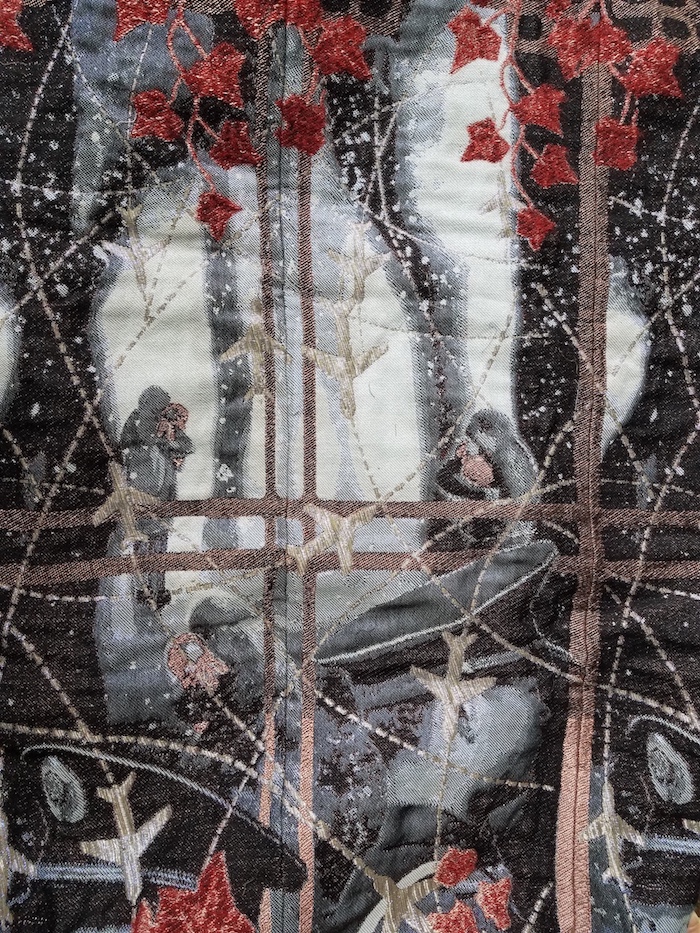
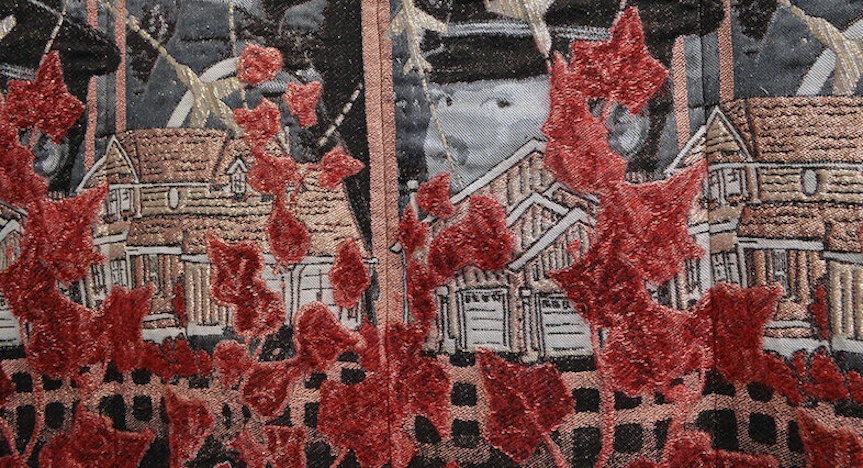
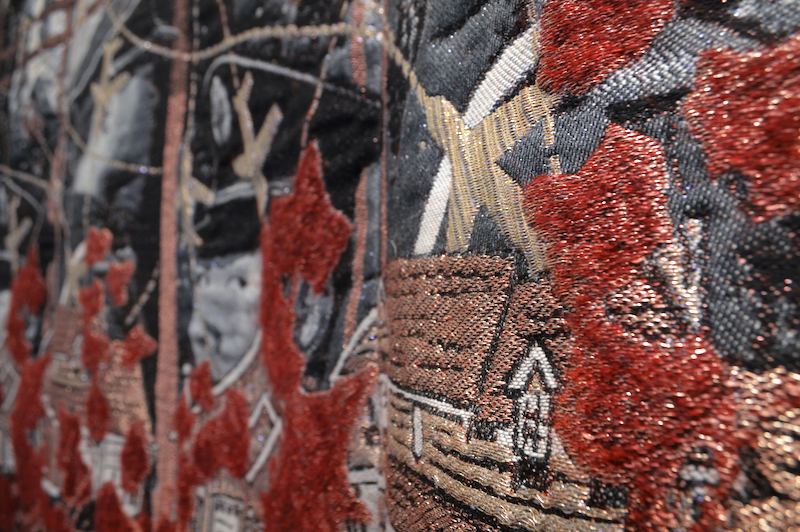
In the 1980’s, the Chinese government issued the One-Child Policy in an attempt to control population. Due to a long standing cultural preference for sons, hundreds of thousands of female infants were abandoned across China. Many ended up in orphanages and were subsequently adopted by families in North America, Europe, and Oceania. Airplanes, a metaphor for the adoptee diaspora, streak through the composition. Barely visible in the background are a group of inexpressible figures. In their arms are infants, wrapped in rose-gold threads. The suburban complex I grew up in outside of Seattle is depicted here, with unkempt, overgrown ivy yards. Overhead, snow falls from the branches of willow trees in Daguan Park, the location where I was documented to have been found by the local police in November of 1994.
Pt. II, acculturation
7 x 9 ft - hand-dyed wool silk blend, acrylic, rayon, opalescent slit film yarn
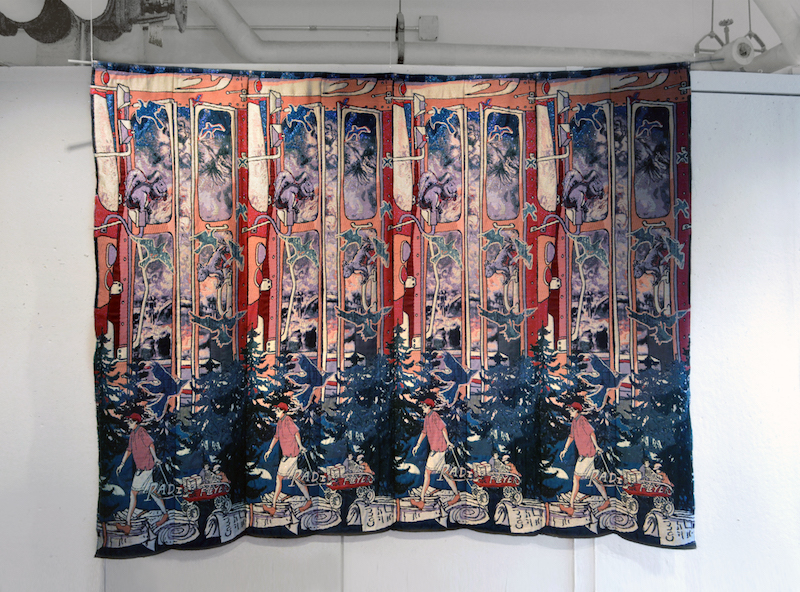
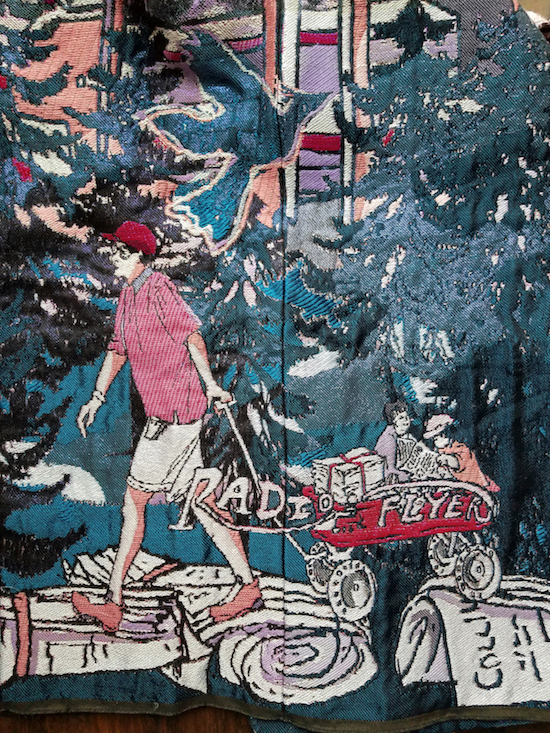
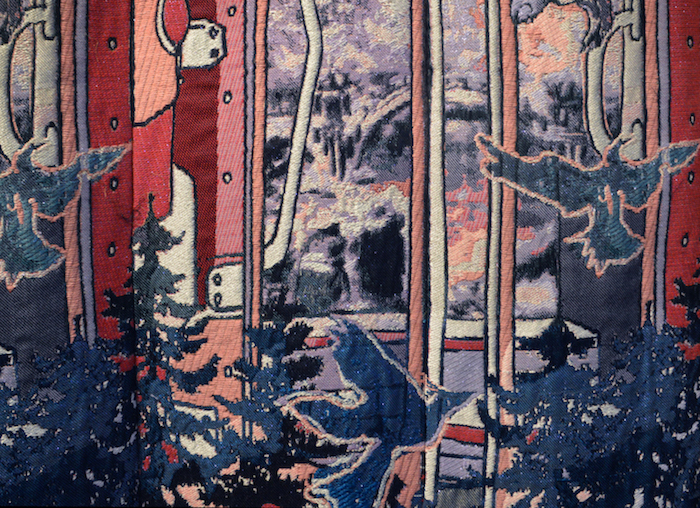
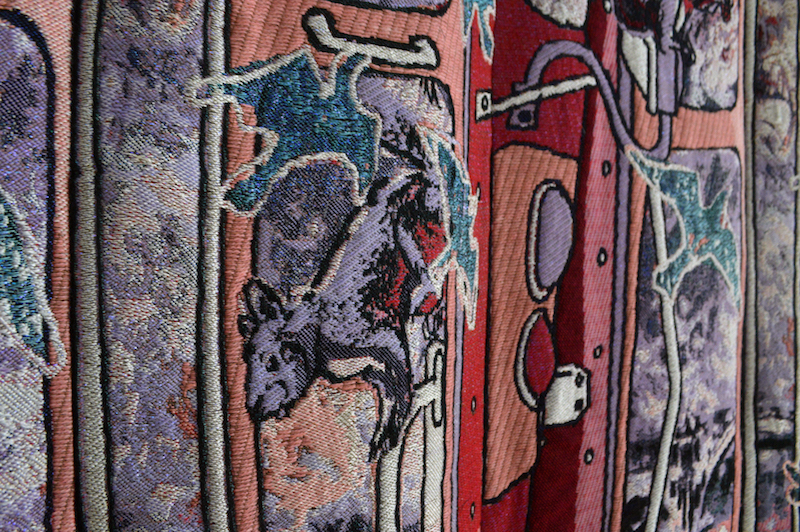
Until high school, it never occurred to me that I was Asian. Though my parents made valiant efforts to expose me to Chinese culture, I felt no connection or interest. I was content living in the suburbs of Seattle and the thought of another set of parents in China rarely crossed my mind because it registered as an abstract idea rather than a tangible fact. Then, in the summer before my senior year of high school a friend recommended the novel, Messages from an Unknown Chinese Mother written by a Chinese radio host from the 1980’s who privately interviewed mothers who had been forced to surrender their daughters. Their stories opened a doorway into Chinese history, laws, and long-held beliefs I had never contemplated before.
~~~~
A school bus frames the second woven panel, as squirrels and bluejays dart above a row of evergreen trees. My adoptive father is depicted at the bottom, making his weekly newspaper route while pulling my sister and I in a red wagon behind him. Inside the school bus window, a man and woman sits in a park by the river, looking into a sky filled with Chinese constellations.
pt. III, the return
6 x 9 ft, nylon eyelash, cotton chenille, hand-dyed wool silk blend, metallic Kyototex, opalescent slit film yarn
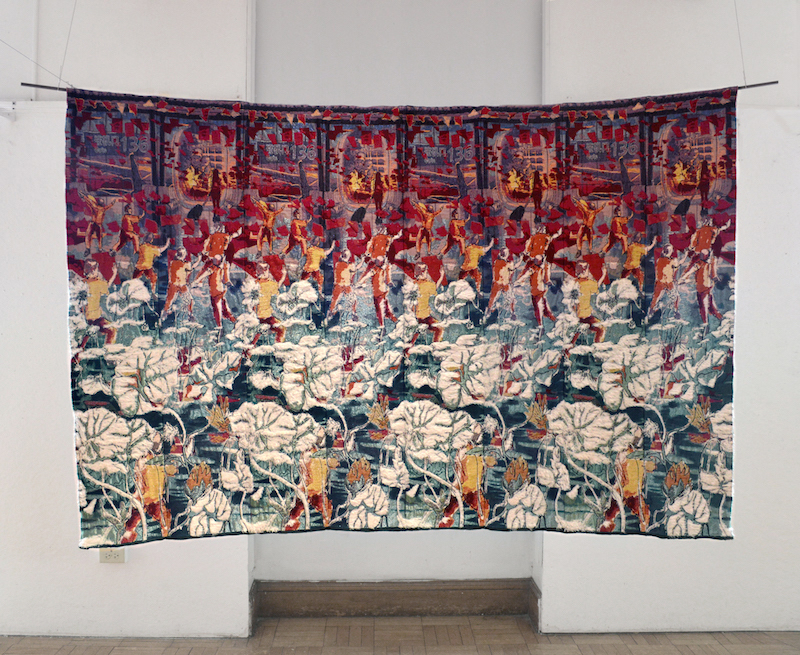
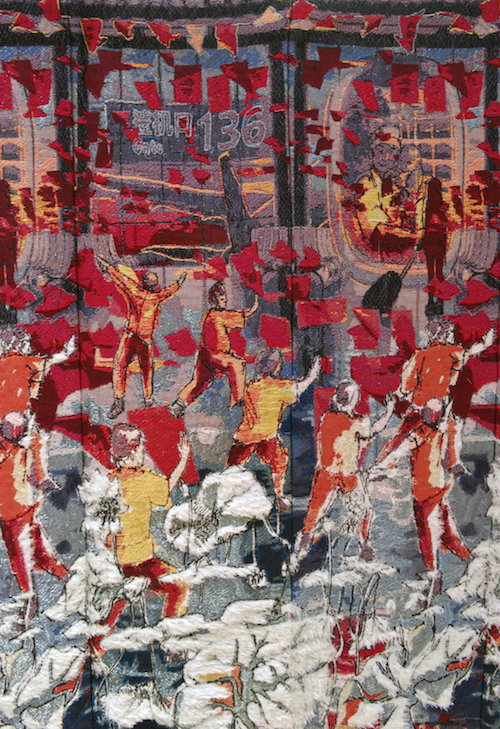


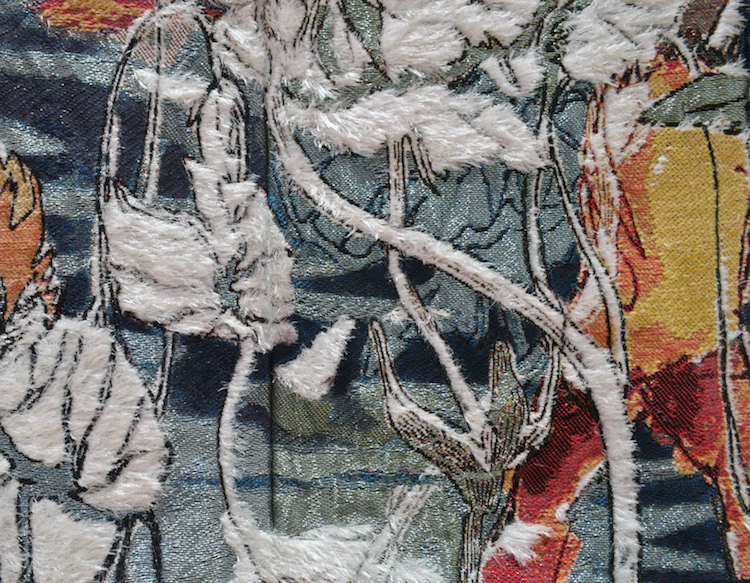
An illuminated arrow points me in the direction of Gate 136. Dodging throngs of travelers, I take a left down a narrow hallway and the commotion of overlapping voices wanes. For a brief moment, as I watch a plane roll across the rain-slicked pavement and towards the gate, my vision blurs. I recall a photograph, given to my parents in 1995, depicting a nanny from the Kunming Children’s Welfare Institute holding me close to her face when I was six months old. Shrugging off the straps of my backpack, I sit, close my eyes, and wait.
~~~
When I was eighteen, I flew back to China and visited Daguan Park, the location I was left as an infant in Kunming. During my travels in Kunming, I often saw elderly women gathered on the park’s many pavilions to exercise by way of synchronized dance. With the sound of classical flutes drifting from a portable stereo, red prayer flags, and giant lily pads snaking across the park’s endless expanse of waterways, the dancers’ presence became a source of comfort. Though it was not possible to verbally communicate, towards the end of the trip I found myself alongside them, following their routine. The final woven piece depicts these memories, and highlights the significance of urban gathering spaces and public infrastructure across cultures.
